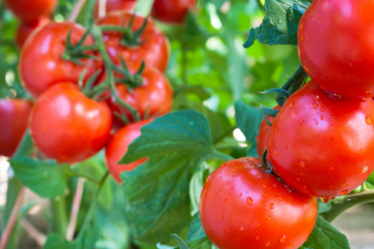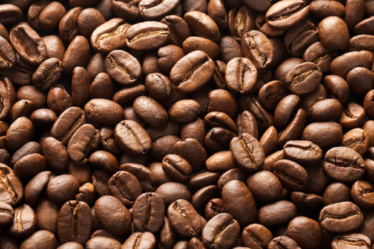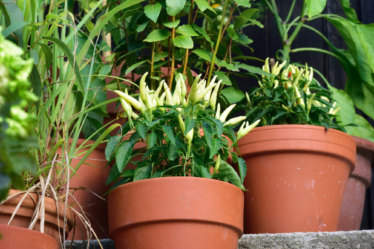
Extremely nutritious, butternut squash – also known as butternut pumpkin in some countries – isn’t just a vegetable to be made into soups and curries, but also an interesting ingredient for a lot of baked recipes.
High in potassium, Vitamin A, Vitamin C, magnesium and calcium, butternut squash may not be as popular as tomatoes, lettuce or carrots, but it is nevertheless one of the most important vegetables available everywhere. Regular consumption of butternut squash keeps our body hydrated, boosts our immunity, keeps our blood sugar and blood pressure stable, and is excellent for our vision as well as a great source of fiber.
How Hard it is to Grow Butternut Squash?
Butternut squash isn’t hard to grow at all!
In fact, this is a very easy vegetable to grow for a beginner. Of all the different kinds of squashes, i.e. pumpkins, winter squash, field pumpkin, honey nut squash or crookneck pumpkin, butternut squash is one of the most versatile and easy to grow vegetables.
Easily recognizable by its pale-yellow skin and a pear shape, butternut squash is mainly summer vegetables. These vegetables don’t need a lot of looking after to grow but will need help from the sun and the weather. With all the right conditions, any new gardener or a complete beginner can grow a few butternut squash plants in their own garden.
Can Butternut Squash be Grown in a Pot at Home?
Butternut squashes are actually trailing a variety of plants, which means that they grow the best outside where there’s enough space. However, if you do not have the space for a garden, it is still possible to grow some selective varieties of butternut squash in a container at home.
Barbara is such a compact variety of bush-type butternut squash plants that can be grown in a container that doesn’t have to be larger than 18” in diameter. The containers would also have to be at least 18” deep for Barbara butternut squash to grow perfectly inside the house.
How Can You Grow Butternut Squash at Home? • Planting:
Butternut squash can be directly grown from seeds. The seeds need to be planted early in April in individual pots for the seeds to sprout. When the seeds have sprouted, the seedlings need to be transferred to a garden plot, a raised garden bed or even a large container – depending on the variety – for growing to full size.
In the same way, butternut squash seedlings can be directly sown into a garden bed or a large container. This needs to be done around late May or early June depending on where you live in the world when both the soil and the weather is ready for the plants to grow properly.
• Soil:
Butternut squash seed or seedling should only be planted when the soil is safe from being frozen by a frost, i.e. the soil temperature needs to be about 60°F to 65°F and well warmed by the summer sun to be ready. Butternut squash seeds will only germinate in warm soil and its seedlings will only grow further when its roots are warm inside the soil.
The soil should not only be naturally warm, but also fertile and well-nourished with the right kind of fertilizer. Sandy and loamy soil that is slightly acidic and has a good drainage system are perfect for growing Butternut Squash – both indoors and outdoors.
• Sunlight:
Since butternut squash is a summer vegetable, they need the full support of the sun to grow, mature and produce. These plants should be planted at such a time that they can get at least 6 hours of sunlight every single day.
At the same time, if the sunlight is too bright or too hot in your region, the plants might need to be covered around noon. Otherwise, the young plants might wilt with exhaustion.
• Watering:
The amount of water fed to butternut squash plants depends directly on how much water the soil in your area can retain, how much moisture and humidity is present in the soil, and how much it rains in your area.
The soil for butternut squashes should be moist at all times, but without any drops of water trapped inside the soil. If it rains regularly in your region, there isn’t any need to water the plants every day as they are growing; on the other hand, if the weather is too hot, watering should be regular but little.
Before the seedlings are planted, the ground needs to be soaked well so that the roots can grow uninterrupted for a few days without the need for additional watering.
• Fertilizer:
Soil rich in organic matter is perfect for growing Butternut squash, but the same effect can be achieved by adding compost tea or organic liquid fertilizer to the soil before planting the seeds.
Manure or organic compost can be also added to the topsoil in the middle of the season to help the plants produce more yield.
• Weeding and Pest Control:
Squash bugs are the most common enemies of butternut squash plants – a dark-colored bug that resembles a human fingernail. These bugs are mostly found in young plants as they are growing.
Squash bugs suck out the sap from the plant stems, leaving the butternut squash plants dry and wilting. However, these bugs can be found under the leaves in form of eggs and can be easily removed by holding with a damp piece of cloth.
• Spacing:
Butternut squash plants don’t need much spacing to grow well, but they need so to keep each other safe from certain pests. These plants are prone to a particular fungus known as powdery mildew which spreads from the leaf of an infected plant to that of a healthy plant. If the butternut squash plants are appropriately spaced with enough space between them, the fungus wouldn’t spread much.
• Harvesting:
The longer Butternut squashes are left on the plant to mature, the more they can be stored after harvesting. Therefore, there isn’t any problem in leaving these vegetables are left on the plants until you are ready to harvest them.
At the same time, it is very important that all the vegetables produced by the plants are harvested before the frost comes. If the weather becomes cold, these summer vegetables will start to freeze and lose their taste.
Frequently Asked Questions (FAQs) About Growing Butternut Squash as a Beginner• Do Butternut Squash Like Sun and Shade?
Butternut squash is a summer plant and they need at least 6 hours of sunlight every day. These plants can’t grow properly without direct access to adequate sunlight but also need to be covered when the sun is too hot or too bright.
• How Many Squashes Can You Get Per Plant?
Depending on the variety, each butternut squash plant can produce from two to five squashes in every season. Honey bear, for example, is a high yielding variety and they can produce at least five fruits at the same time.
A regular butternut squash plant can yield two to three fruits in every season, but they can be harvested from the plant gradually and only when you are ready to.
• Is it Better to Keep Butternut Squashes Inside or Outside?
The great thing about these vegetables is that butternut squashes can be easily stored at home for a long time, even without the help of a refrigerator. If you’ve harvested the vegetables before you’re ready to consume them, you can simply clean them with a dry piece of cloth and keep them under room temperature for days.
Butternut squashes can also be kept on the vines for as long as the weather outside is warm before the first frost comes. As long as the vegetables are on the plant and have not been harvested, they will stay fresh and tasty
• How Can You Stop Butternut Squashes from Rotting While Growing on the Plant?
If your butternut squashes – either the vegetable or the blossom – seems to be rotting while on the plant, it might mean the plant is suffering from calcium deficiency. The only way to treat this is to remove the affected fruit instantly before the rot reaches the other parts of the plants.
This particular problem can also be solved by spraying some calcium-rich fertilizer on the plant, which will ensure that the next fruits produced by the plants will be healthy and tasty.
• What Can be Planted with Butternut Squash Plants?
The perfect companion plants for butternut squashes are aromatic herbs such as chamomile, chives, oregano, tansy, marjoram, hyssop, etc. As these herbs – especially oregano – have a strong smell, they attract hover flies, which in turn feed on harmful aphids around the plant.
At the same time, the presence of marjoram herbs planted near butternut squash plants is known to enhance the taste of the vegetables every season.
Among others, great companion plants for butternut squash includes radish plants, corn plants, beans and nasturtium plants.
• How Do You Keep a Butternut Squash Plant Healthy?
Watering regularly and adequately is what’s going to keep your butternut squash plant healthy. At least the top 1” of the soil needs to be thoroughly watered every week and keep moist constantly, especially when the plants first start to produce fruit.
The amount of water, of course, depends on a few external factors, i.e. the condition of the soil, the humidity in the air and the weather. On hot days, more water needs to be added to only the soil underneath the plant, and not the stem, the leaves or the fruits. When it is constantly raining in your area, there’s no need to water your plants at all.
The proper amount of watering is what’s going to keep your butternut squash plants healthy.
• Is a Butternut Squash a Creeper or a Climber?
Some varieties of butternut squash plants need the support of a trellis to grow upwards. These actual plant varieties that are chosen to save space in a garden as they mostly grow vertically. The support of trellis or teepees make is easy for these plants to grow up properly and reach their appropriate size. Hence, butternut squash plants can actually be considered a climber.
On the other hand, some varieties of squash grow in heavier plants and they need the support of a specially built trellis. These types of plants can also be grown horizontally above the ground, but on a sturdily built trellis with multiple support.
• How Long Can Butternut Squash Stay Good in the Refrigerator?
Whole and uncut butternut squash doesn’t need to be stored in the refrigerator. They can, in fact, be stored in a cool and dark corner of your home, in-room temperature, for up to a month before you are ready to use it. As long as butternut squashes haven’t been cut or pricked in any way, they don’t need to be refrigerator.
After they’ve been cut, raw butternut squash – after they’ve been sealed and covered – can stay good in the refrigerator for another 5 to 6 days.
Conclusion
A popular variety among squashes, butternut squashes can be considered one of our most important vegetables because of how delicious and nutritious they are. These vegetables are easy to grow and don’t require a lot of care or attention apart from the appropriate soil and weather conditions, making them one of the easiest vegetables to grow as a beginner.


